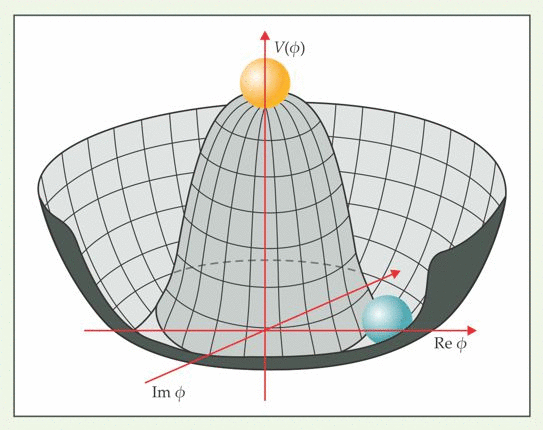I just wanted to reach out to you to see what you would like to see in a horror story. As I'm coming to the final leg on my work-in-progress (more on that in a few months). But as soon as I'm wrapped up on this I'm looking to jump back into a few short stories. I'm hoping to edit an anthology this year (more on that in a few months!), but I don't plan on waiting to get back to my first love in fiction writing: short stories.
All Posts (6509)
Tyleen Hackworth crouched beneath a camouflage quilt on a thin slab of a ledge overlooking the canyon. Positioned precariously close to the edge, he felt not the slightest compunction about being mere inches from a 500 foot drop; a thousand if a strong wind shifted his trajectory and he fell into a particularly deep depression in the canyon floor.
He scoffed at the danger. As a former recon trooper he had operated in worse environments. Besides, Hooper paid damned well. Hackworth held a multi-spectrum bi-scope to his eyes and zoomed in on smoke drenched areas where the Shatter Busters struck. He pulled back the focus and panned a broader section of the canyon, stopping when he picked up movement a mile from the first Shatter Buster impact site. He zoomed in, adjusting the bi-scope’s night sight to scrub away layers of darkness.
A figure climbing up a cliff wall. The armored man.
Hackworth tapped the subdermal comm next to his ear. “I’ve got a sighting. Lowtower’s scaling a cliff.”
“Copy that,” Hooper responded. “Keep an eye on him.”
“Not a problem.”
Five miles away, Hooper and Tunnel exchanged satisfied glances from inside the administrator’s command TVV. “I said he’d either be buried or flushed out,” Hooper remarked casually. “I’ll settle for the latter.”
Tunnel shined a venomous gaze through the TVV’s front window. “Let’s just hurry up and smite this bastard.”
Hooper grinned wryly and reached over to the console, tapping a link. “Standby. Deploy on my word.”
The Skyguard pilot’s voice responded: “Acknowledged.”
Dern reduced his suit’s power before ascending the canyon rockface. He wanted his Flare-enhanced muscles to endure the bulk of his climb up the cliff wall. With his suit’s power levels at less than optimum, he counted on the energy he conserved making a difference later.
He moved quickly when he found protrusions or small depressions to grip. Patches of smooth wall forced him in lateral directions until he discovered more protrusions to propel him upward.
He finally reached the top and hoisted himself onto level ground. After elevating his suit’s power level, he embarked on an accelerated run across a rocky plain.
A low rumble, increasing in volume filled his audio. Dern recognized the noise and cursed his bad luck. The goons had him right where they wanted him. A wide-open target in the middle of nothingness. He increased his acceleration, but knew that would do absolutely no good. He should have planned better…
The Skyguard soared directly above the fast moving target, releasing a spread of four Shatter Busters. As the bombs’ noses tilted downward in screaming plummets, the Skyguard shot up toward the stratosphere with the velocity of a bullet.
Four retina-searing blasts lacerated the darkness below.
The Skyguard pilot checked his scanner. Readouts didn’t pick up any movement from the target. The pilot had no intention of doing a flyover to assess the target’s condition. Not with the target’s rep. Instead he sent a transmission to Hooper. “Man down. Repeat…man down.”
That’s exactly what Hooper wanted to hear. He contacted his people in Routh, demanding reinforcements….
Dern awoke flat on his back with a daylight sun glaring down on his inert form like a giant angry eye.
Flare washed away his disorientation and he rose to waist level, freezing when he found himself enclosed in a ring of TVVs, their turrets directed on him.
“No sudden moves, Lowtower,” an amplified voice commanded from one of the TVVs.
Dern focused on the TVV directly in front of him; the source of the voice.
“Get up slowly,” the voice blared. “Keep both arms at your side. You so much as raise that weapon of yours and we’ll fry you where you stand.”
His suit felt heavier than normal as he rose very slowly to his feet. A quick glance at his display told him he didn’t have enough power to juice up a talking doll. The bombs didn’t pulverize him, but one landed close enough to knock him unconscious, rendering his suit inoperable. A large freshly gouged crater forty yards to his left reminded him of his recent peril.
Two Scythes flew toward him from the canyon’s direction.
“Keep those arms down,” the voice reiterated.
Dern sighed hopelessly. He had a better chance of squeezing water from a pebble than discharging a plasma burst.
The Sythes hovered threateningly above, ready to douse him with missiles at the slightest pretext.
Dern stood rock still. He wasn’t in the habit of providing pretexts.
The side hatches on the TVV facing Dern retracted. Out emerged four individuals in heavy armor of polished tan. Each armored figure wielded a wide barreled rifle with combined, high-energy emitting, rocket-launch features. The type of weapon an unarmored person, even if Flare-enhanced, would have had difficulty holding.
Dern recognized the weapons. Tanner Duel App Blasters. Tanners, whether in rocket or high-energy mode, packed enough punch to cripple a battle tank. While Tanners were modern enough, the armor was obsolescent, dating back to the early years of Coalition existence some three centuries ago. Big, bulky, with little articulation, the Series A5 Active Mobility Suit was state of the art in its day. As the armored figures approached Dern with their stiff, plodding strides, he couldn’t help thinking how he would have run circles around them with each step they took.
That thought reminded him of his current disadvantage and he clenched his fists in anger.
The Suits halted twelve feet away and leveled their Tanners on him.
Dern unclenched his fists.
Two more occupants emerged from the TVV. Hooper and Tunnel.
“I appreciate your cooperation, Lowtower,” said Hooper, bringing his hands together in mock applause.
“I’m not interested in what you appreciate,” Dern retorted. “If you’re going to kill me, kill me.”
Hooper grinned, stroking his lustrous beard. “Tough talk. How fitting coming from an SD soldier. The famed elite of the elite.”
“Former SD. I’ve been a civilian for quite some time.”
“Yet, you can’t separate yourself from the armor, can you?” Hooper threw up a grand gesture. “Even in its reduced state.”
Dern said nothing. Maybe Hooper was right.
“Well, I have a solution to your problem,” Hooper stated. “Take the armor off. Be free of it.”
Stunned, it took several seconds for Dern to process the question before he settled on a decisive, “no.”
“I’m not surprised by your answer.” The crimelord raised a hand.
In reaction the hatches on three more TVVs opened and the sleeper ship crewmembers were shoved out onto the ground. Hooper’s thugs followed, kicking the downed prisoners. One thug grabbed Alita by the hair and jerked her head up. Another one placed a very large knife to her throat, its jagged edge snagging a piece of the sun. Alita’s eyes shimmered with an electric mix of fear and defiance. Then they locked on Dern and never wavered.
The rest of the crewmembers were lined up and forced to their knees. Hooper’s goons stood over them with assault rifles aimed at the backs of their heads.
“I don’t think I need to say anymore, do I?” Hooper asked, his gaze cold as an arctic frost.
With the message drilled in to him, Dern slowly pressed invisible releases on his arms and upper chest. Hyper dense overlapping plates covering his armor shrunk into invisible niches. The metallic inner layer reverted to a softer elastic material making it appear as if Dern were wearing a form fitting vinyl head to toe leotard.
He slowly unlatched the HIE and let it slide off his wrist onto the ground. Afterward, he pulled back the translucent mask that was his helmet and dropped it on the ground beside the HIE. He pulled a zipper that began at his shoulder, ending at his naval and stripped out of the armor, leaving it crumpled at his feet.
Most of the women in Hooper’s gang…and two or three of the men whooped salaciously at the sight of Dern’s mostly nude, well muscled physique.
He stood before this heavily armed procession, pared down to his shorts. Yet, he felt not a flicker of vulnerability. Rage loomed too large in his soul to accommodate anything less than the delectable urge to erase these cutthroats.
Alita lowered her eyes and Dern could practically feel waves of her despair pummeling him.
“There,” Hooper said with a sardonic smile. “That wasn’t so difficult was it?”
Africa has traditionally been a neglected landscape in speculative fiction. Terry R. Hill brings the second largest continent to the fore in a spectacular way in his compelling work of science fiction titled Third Exodus. In the novel, terrorists inadvertently unleash a chain of events on Earth that sparks a catastrophic conflict between humans and machines. The war devastates the planet, but leaves the African continent relatively unscathed. A visionary African leader, recognizing that life on Earth is doomed, proposes and eventually implements a plan to settle humans on Mars. Col. Zune Adamini, a famed military officer, is chosen to lead an expedition to the Red Planet.
All is not smooth sailing in this monumental endeavor to save humans from a dying Earth. Power, greed, and unbridled ambition casts a shadow over the evacuation efforts. Adamini is forced to undermine an agenda set in place by superiors he cannot trust, but he must do so with utmost secrecy and deception. He receives assistance in his efforts from an alien artificial intelligence. While Adamini understands the mentality of his human enemies and takes measures accordingly to thwart their plans for the Martian colony, the AI's intentions remain a mystery to him.
The author does a seamless job of imagining a manned journey to Mars and its eventual colonization. His background in NASA confers an authentic feel on the narrative, infusing his description of space tech with an engineer's eye. Add to the hard science element his skillful use of science fiction's popular tropes: the sentient AI and FTL travel, and what you have is a well rounded adventure with interesting, well developed characters. Third Exodus envisions a desperate migration from a world that can no longer sustain life. Hopefully, a real world exodus will not be saddled with that level of urgency. ”
 |
| Source: Voluntary Action History Society |
Pseudoscience (Meridian-Webster): a system of theories, assumptions, and methods erroneously regarded as scientific (disproved handily by Mr. Jesse Owens).
Olympic.org: Jesse Owens
Martian experts have known since 2011 that mysterious, possibly water-related streaks appear and disappear on the planet's surface. Georgia Institute of Technology Ph.D. candidate Lujendra Ojha discovered them while an undergraduate at the University of Arizona. These features were given the descriptive name of recurring slope lineae (RSL) because of their shape, annual reappearance and occurrence generally on steep slopes such as crater walls. Ojha has been taking a closer look at this phenomenon, searching for minerals that RSL might leave in their wake, to try to understand the nature of these features: water-related or not?
Ojha and Georgia Tech Assistant Professor James Wray looked at 13 confirmed RSL sites using Compact Reconnaissance Imaging Spectrometer for Mars (CRISM) images. They didn't find any spectral signature tied to water or salts. But they did find distinct and consistent spectral signatures of ferric and ferrous minerals at most of the sites. The minerals were more abundant or featured distinct grain sizes in RSL-related materials as compared to non-RSL slopes.
"We still don't have a smoking gun for existence of water in RSL, although we're not sure how this process would take place without water," said Ojha. "Just like the RSL themselves, the strength of the spectral signatures varies according to the seasons. The signatures are stronger when it's warmer and less significant when it's colder."
Science Daily: Flowing water on Mars appears likely but hard to prove
OK everyone!
It is time for us to make some Afrofuturistic 3D Action Films!
We are down to our last few weeks on our campaign to raise funds for the Earth Squadron movie. We need everyone that reads this to please donate to make this a reality. Whether it is $5, $10 or more, each donation ads up. We often see depictions in movies and TV shows that are stereotypical or less than flattering to say the least regarding women and ethnic groups.
Earth Squadron is a film about what happens when planet Earth's rejects are the only ones that can save them from an unknown alien foe bent on world domination. We want to produce films that show positive images for our kids to emulate. We believe you do as well. Please click this link and play your part in this great project. Thank you in advance for any assistance you can provide.
http://www.indiegogo.com/projects/earth-squadron-movie-project
 |
| Image source |
In an era of #Scandal, it's probably hard today for kids to imagine this was as controversial as it was. It was groundbreaking, and made room for the creative talents of Ms. Shonda Rhimes (not "her only rodeo," as they say in Texas). I know it was BANNED in North Carolina and most parts of the south in the 1960's. Wikipedia seems to show an international bias as well:
"Plato's Stepchildren" is a third season episode of the original science fiction television series Star Trek, first broadcast November 22, 1968. It is episode #65, production #67, written by Meyer Dolinsky, and directed by David Alexander. This episode is one of the first scripted American television broadcasts to depict an inter-racial kiss between a white man (Kirk) and a black woman (Uhura).[1][2] This episode was withdrawn by the BBC in the UK because of 'sadistic plot elements' during the initial run in 1971 and was not shown until a repeat run in January 1994.
Ms. Nicols describes the scene:
 |
| Figure 2. The Mexican-hat potential energy density considered by Jeffrey Goldstone in his seminal 1961 paper. 2 The energy density is a function of the real (Re) and imaginary (Im) values of a spinless field ϕ. In the context of the electroweak theory developed later in the decade, the yellow ball at the top of the hat would represent the symmetric solution for the potential, in which the photon, W bosons, and Z boson are all massless. The blue ball in the trough represents the solution after symmetry breaking. In that solution the W and Z bosons are massive and the photon remains massless. The steepness of the trough is related to the mass of the Higgs boson. Citation: Phys. Today 66, 12, 28 (2013); http://dx.doi.org/10.1063/PT.3.2212 |
Symmetries and other regularities of the physical world make science a useful endeavor, yet the world around us is characterized by complex mixtures of regularities with individual differences, as exemplified by the words on this page. The dialectic of simple laws accounting for a complex world was only sharpened with the development of relativity and quantum mechanics and the understanding of the subatomic laws of physics. A mathematical encapsulation of the standard model of particle physics can be written on a cocktail napkin, an economy made possible because the basic phenomena are tightly controlled by powerful symmetry principles, most especially Lorentz and gauge invariance.
How does our complex world come forth from symmetrical underpinnings? The answer is in the title of Philip Anderson’s seminal article “More is different.” 1 Many-body systems exhibit emergent phenomena that are not in any meaningful sense encoded in the laws that govern their constituents. One reason those emergent behaviors arise is that many-body systems result from symmetries being broken. Consider, for example, a glucose molecule: It will have a particular orientation even though the equations governing its atoms are rotationally symmetric. That kind of symmetry breaking is called spontaneous, to indicate that the physical system does not exhibit the symmetry present in the underlying dynamics.
It may seem that the above discussion has no relevance to particle physics in general or to the Higgs boson in particular. But in quantum field theory, the ground state, or vacuum, behaves like a many-body system. And just as a particular glucose orientation breaks an underlying rotation symmetry, a nonvanishing vacuum expectation value of the Higgs boson field, as we will describe, breaks symmetries that would otherwise forbid masses for elementary particles. Now that the Higgs boson (or something much like it) has been found at the Large Hadron Collider (LHC; see Physics Today, September 2012, page 12), particle experimentalists are searching for more kinds of Higgs bosons and working to find out if the Higgs boson interacts with the dark matter that holds the universe together. Cosmologists are trying to understand the symmetry-breaking Higgs phase transition, which took place early in the history of the universe, and whether that event explains the excess of matter over antimatter. The measured mass of the Higgs boson implies that the symmetry-breaking vacuum is metastable. If no new physics intervenes, an unlucky quantum fluctuation will eventually spark a cosmic catastrophe.
Physics Today: The future of the Higgs Boson
Hey BSFS! I am very excited this week. I am making my first appearance as Foundation Press publisher speaking to a local Atlanta group called ForeverFamily as part of its Black History Month program. I have the honor of encouraging kids 5-16 and their parents to consider writing as both hobby and profession.
Also on Feb 16 I am entering both my novels T'Schai and Enemy Space in the Amazon Breakthrough Novel Contest, giving me two shots at the $50 thousand advance and publishing contracts. Wish me luck as I wish any of you entering the same!
Post 9/11/2001 to encourage national unity:
Super Bowl commercial celebrating our changing demographics and diversity (E Pluribus Unum):
Acts 17:26 "And He has made from one blood every nation of men to dwell on all the face of the earth, and has determined their preappointed times and the boundaries of their dwellings,"...(I doubt they've read this one)
BTW: as complained, American The Beautiful penned by Katharine Lee Bates is not the national anthem. That distinction belongs to the Star Spangled Banner by Francis Scott Key. Civics is lacking, as ignorance is glorified and abounds...
New Colossus (The "Statue of Liberty poem")
Not like the brazen giant of Greek fame,
With conquering limbs astride from land to land;
Here at our sea-washed, sunset gates shall stand
A mighty woman with a torch, whose flame
Is the imprisoned lightning, and her name
Mother of Exiles. From her beacon-hand
Glows world-wide welcome; her mild eyes command
The air-bridged harbor that twin cities frame.
"Keep, ancient lands, your storied pomp!" cries she
With silent lips. "Give me your tired, your poor,
Your huddled masses yearning to breathe free,
The wretched refuse of your teeming shore.
Send these, the homeless, tempest-tossed to me,
I lift my lamp beside the golden door!" Emma Lazarus
 |
| Kathleen Jay's travel blog |
Saw this, and became a little more than just casually concerned...
If increased realistic fears of suicide conventional bombing at Sochi were not enough, the Chechen connection is troubling when considering whether any of these groups might attempt to use radioactive materials to disrupt the Olympics. Chechens have been responsible for some of the earliest uses of radioactive material, starting from the placement of a small cesium 137 source in a Moscow park in the mid-1990s and there have been repeated threats and reports of Chechen groups intent to use radioactive material in a Radioactive Dispersal Device (RDD), particularly the threat to use explosives to carry out the dispersal, creating a “Dirty Bomb.”
Since various sorts of radioactive material has been out of control in Chechnya since the Soviet Union collapsed it is certainly possible that militant groups might possess small amounts of radioactive material. Obviously explosives are readily available. Would any of these groups use radioactive material against the Olympics if they possessed it? Unfortunately the answer may be that they would. Not only is it an extremely visible target, but Russian President Putin has made his personal prestige an issue, which may be viewed as too tempting a challenge for some of these groups to forego.
Federation of American Scientists: A Credible Radioactive Threat to the Sochi Olympics?
 |
| Image from Black Inventors |
Plasma etching utilizes a gas excited/ionized in an electromagnetic field into a plasma - the fourth state of matter (solid, liquid, gas, plasma). Etching is how the semiconductor industry transfers a pattern in a photomask (a designed chrome mask) using UV light and photoresist. The resist captures the pattern, and is developed like photos (in old-style film and a camera). The plasma uses physical as well as chemical processes that react with the film to remove it leaving the exposed pattern. The resist is usually stripped away before subsequent processing in the wafer fab.
Plasma etch is used to transfer that pattern (s) becoming the integrated circuits in your cell phone; remote control; your thermostat in your home; your security system; your laptop; its mouse, servers for banks and the Internet: basically everything electronic you can think of.
You have the genius of this man to thank for it:
Physicist George Edward Alcorn, Jr. is best known for his development of the imaging x-ray spectrometer. Born on March 22, 1940 to working class parents, Alcorn was an excellent student and star athlete. He was awarded an academic scholarship to Occidental College in Pasadena, California, where he completed his B.A. in Physics in 1962. From there, Alcorn pursued graduate studies at Howard University in Washington, D.C. He earned his master’s degree in nuclear physics in 1963, and his Ph.D. in atomic and molecular physics in 1967.
At NASA Alcorn developed the imaging x-ray spectrometer. An x-ray spectrometer assists scientists in identifying a material by producing an x-ray spectrum of it, allowing it to be examined visually. This is especially advantageous when the material is not able to be broken down physically. Alcorn patented his “method for fabricating an imaging x-ray spectrometer” in 1984. He was cited for his method’s innovative use of the thermomigration of aluminum. For this achievement he was recognized with the NASA/GSFC (Goddard Space Flight Center) Inventor of the Year Award.
Alcorn is credited with more than 20 inventions, and holds at least eight U.S. and international patents, many of these related to the semiconductor industry. For instance, he developed an improved method of fabrication employing laser drilling, and a process for improving the process of plasma etching.
MIT Inventors of the week: George Edward Alcorn, Jr. PhD
Plasma Etching: Dr. Lynn Fuller, RIT
 |
| Source: Link below |
Materials shape human progress—think Stone Age or Bronze Age. The 21st century has been referred to as the molecular age, a time when scientists are beginning to manipulate materials at the atomic level to create new substances with astounding properties.
Taking a step in that direction, Jens Bauer, at the Karlsruhe Institute of Technology (KIT), and his colleagues have developed a bone-like material that is less dense than water but as strong as some forms of steel. "This is the first experimental proof that such materials can exist," Bauer said.
Ars Technica: New laser-printed material is lighter than water, as strong as steel

